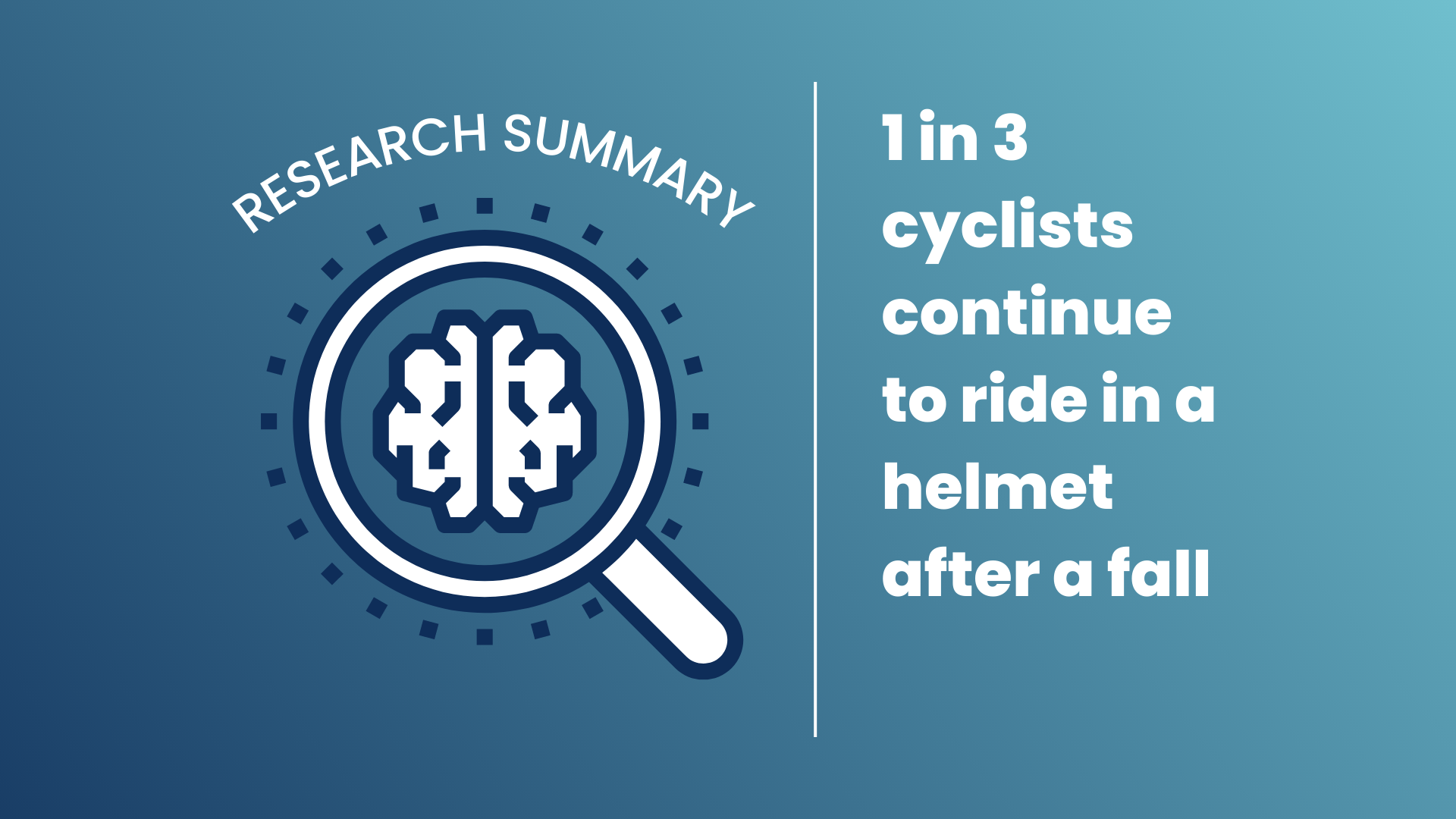
A Little Goes A Long Way
Your gift today is an investment in BrainTrust services that improve the lives of those with brain injury.
Donate Today


Concussion is a mild traumatic brain injury caused by a direct or indirect force transmitted to the brain
Cycling activities include road of track racing, BMX, mountain biking, commuting, and triathlon
Helmets reduce effects of serious head injury through protecting against skull fractures, head lacerations, and penetrating injuries
Current evidence and guidelines on concussion have focused on contact sports
The goal of the study was to determine knowledge, attitudes, and behaviours towards concussion in cyclists, coaches, and managers and to examine gaps in knowledge.
Short online survey distributed to cycling clubs, businesses, and organizations in New Zealand
672 respondents
Concussion frequency
Nearly 60% of participants had experienced at least one concussion
Knowledge of concussion
General knowledge of concussion was high, as well as knowledge of most concussion symptoms
Seeking medical treatment and return to sport
97% agreed that a person should seek medical treatment after injury but only 1 in 3 had always done so in the past (difference between attitude and behaviour)
56% agreed people should wait until symptoms resolved before returning to cycling and 56% would actually wait until symptoms had resolved (agreement between attitude and behaviour)
Helmet use
98% always wear a helmet when they cycle
90% agreed a helmet should be replaced after a fall, but 37% had continued to ride in a helmet after a fall (difference between attitude and behaviour)
Only 1 in 5 participants had been taught how to fall to reduce the risk of injury
Cyclists generally have a high level of knowledge about concussion, but knowledge about the function of helmets was low
Although cyclists agree medical treatment should be sought after injury, very few actually do so
Source:
O’Reilly, M., Mahon, S., Reid, D., Hume, P., Hardaker, N., & Theadom, A. (2020). Knowledge, attitudes, and behavior toward concussion in adult cyclists. Brain Injury, 34(9), 1175-1182.
https://doi.org/10.1080/02699052.2020.1793386
We summarize a recently published research study every week to give you current, evidence-based brain injury information.
Related posts: